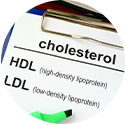Allergies and intolerances triggered by foods and environmental factors are often difficult to diagnose.
Many patients come to us suffering from symptoms that other doctors are unable to identify and may even tell them are imaginary!
Conventional practitioners usually only test for IGE-mediated allergies, which may meet the basic definition of food-allergy testing but often miss other sensitivities and intolerances. Our in-house allergy lab hones in on triggers often missed by others.
Common triggers
In addition to common allergies to commodities ranging from dairy products to nuts, grains, pollen, mold, dust and animal dander, patients often suffer from symptoms caused by things like hystamine, fragrances, pesticides, household chemicals and institutional cleaning agents.
Symptoms
Symptoms due to environmental intolerances may include things you might never have associated with them, ranging from sinus congestion to itchy throat and eyes to hives and aching teeth.
Reactions to food can trigger symptoms that range from mild discomfort to life-threatening repercussions, including:
- Digestive issues, stomach cramps, vomiting
- Chronic fatigue
- Inflammation, swelling of the lips, face, tongue, throat or other body parts
- Coughing, wheezing, nasal congestion, inhibited breathing
- Dizziness, lightheadedness, fainting
- Anaphylaxis
How they treat it
Traditional treatments consist of medications, typically an antihistamine to suppress the reaction to an allergen and weekly injections. The drugs contained in those injections, however, can cause their own side effects from confusion to blurred vision to vomiting and dizziness.
How we treat it
At the Magaziner Center for Wellness, one method we successfully use is sublingual desensitization to naturally treat allergies, food and environmental intolerances. This treatment trains your immune system to respond more appropriately to the foods or substances that are triggering your problems, rather than simply masking the symptoms.
Sublingual desensitization, is safe enough for kids, and is self-administered by simply putting drops under the tongue.
Learn more about sublingual desensitization



































